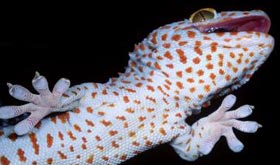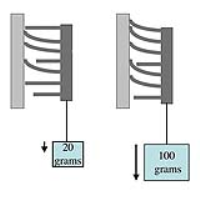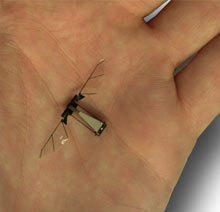Model rocketry has a frequently hostile relationship with nature. Hard desert floors shatter swiftly falling rockets, ponds drown them, high grass hides them, and high winds carry them away. So many rockets drift into the forests that inevitably surround launch fields that my local club joking acronyms itself “Carefully Arranged Tree Ornaments”.
But model rocketry also can benefit from nature, and not just from cushion-like sod. Since model rockets are too small and uncontrolled to use motors to control their descent, they must like animals and seeds use aerodynamic forces to slow their descents.
There are four main types of recovery devices used in model rockets. Drag-based systems like parachutes, streamers, and saucer-shaped rockets use large surface area to slow themselves to manageable landing speeds. Small rockets (under 30 grams) and booster stages often use tumble recovery, where they generate drag by randomly tumbling and rotating while falling. Neither of these systems have a large amount of basis in biological organisms; however, two more exotic recovery devices do.
As I noted in a previous post, autorotation is a method used by many seeds to slow their descents. The first autorotation-recovery (“helicopter”) rocket was the Estes Gyroc, which came out in 1965.1 The ejection charge of the motor triggered flaps on the back of the fins, which caused the model to rotate rapidly on its downward trajectory.

(Fair-use image from JimZ’s site)
Although the flaps did not add a huge amount to the rocket’s surface area, they greatly reduced the terminal velocity, from perhaps 300 feet per second to a more manageable 20 fps. When the rocket rotated rapidly, the fins generated an enormous amount of friction with the surrounding air, creating vortexes that slowed its fall.
This is not the most efficient method of helicopter recovery. Although some kits continue to use the fin-flaps method, most now use deployable helicopter-style blades that provide for far slower descents and win the competitions. I personally own one such model, the Apogee Heli-roc.
One model, designed by Jonathan Mills at the University of Indiana, is actually designed to mimic the autorotation of a maple seed and is based on his studies of maple samaras. The Cyclone splits into two sections for recovery: a one-fin spin unit and a 2-fin tumble section.

(Fair-use image from Prof. Mills’ website)
Since the 2-fin unit contains the motor, its ejection shifts the center of gravity towards the front of the rocket. This skewed weight distribution is normally a stable configuration; however, with only one large fin it becomes unstable and spins, replicating the maple.2 An online review suggests that the design works well; however, it is not a worthy design for competition because competition rules disallow the model from splitting into two pieces, and Mills foudn that single-piece configurations were incapable of replicating maple samaras.3
Gyrocopter recovery is still a niche design for model rockets because of the difficulty in designing a successful spinner, however. But another organism – birds – inspires another recovery style: gliders.
The first glider was the Estes Space Plane in 1962,4 and a flurry followed in the next few years. Because aerodynamics are very different at the 6-inch scale versus the 60-foot scale, it wasn’t possible to simply scale down airplanes. Instead, designs were based off free-flight hand-launched gliders, which in turn descend from detailed observations of bird flight.5. Bird’s bones are light but incredibly strong; similarly, rocket-launched gliders use balsa wings. (Balsa is an incredible material, weighing just 0.14 grams per cubic centimeter yet having double the strength-per-weight of most metals, and beat in that respect only by exotic composites.6)
Large gliding birds use thermals to gain altitude without flapping, and so do those flying rocket-boosted gliders. A small thermal can lift a lightweight glider (0.2g/cc) far more quickly than it can a bird (1.0g/cc); with a skilled flyer, even a hand-launched glider can fly miles away in a thermal.5
Two types of gliders in particular are descended from birds. For the first five years of rocket glider development, consensus centered around hard-winged gliders. Some had fixed wings and some had swing wings, but consensus was that solid wings were required to withstand the forces of launch and deployment. However, in 1967 Gordon K. Mandell, an MIT student, challenged the orthodoxy and produced flex-wing gliders.7 Modeled after the morphable wings of birds, his rockets used thin sticks to deploy polyethylene-sheet wings. Lighter than even balsa wings and allowing easy deployment, flex-wing gliders swept competitions for several years.8
More recently, noted competition designer Tim Van Milligan developed a glider based on the wing of a bat. Like the flex-wing, it is extremely light which allows for faster (and higher) boosts and aids survivability in crashes.

(Fair-use image from Tim Van Milligan)
One of my classmates has also been working on another biomimic recovery device, by using a hinged motor casing to induced autorotation in high-power and professional sounding rockets. You can read about it here.
Cited Sources
1 “Gyroc Model Rocket Classic Kit“. Semroc Astronautics. Retrieved 29 November 2011.
2 Mills, Jonathan. “Weight Distribution of Origami Maple Seed“. University of Indiana. Retrieved 29 November 2011.
3 Mills, Jonathan. “Designing a Maple Seed Rocket“. University of Indiana. Retrieved 29 November 2011.
4 “Space Plane Model Rocket Classic Kit“. Semroc Astronautics. Retrieved 29 November 2011.
5 Kaufmann, John. Flying hand-launched gliders. Morrow: 1974.
6 Wikipedia contributors (23 Nov. 2011). “Specific strength.” Wikipedia, The Free Encyclopedia. Retrieved 29 November 2011.
7 Mandell, Gordon K. (April 1967). “Design Studies in Model Rocket Recovery by Extensible Flexwing“. Tech Engineering News. Reprinted in Model Rocketry magazine, November 1968. Retrieved 29 November 2011.
8 Stine, G. Harry and Stine, Bill. Handbook of Model Rocketry. 7th Edition. Wiley: 2004.





